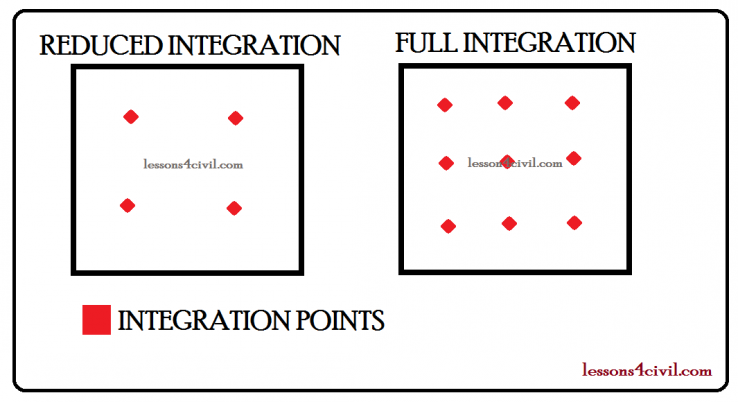Reduced Integration VS full integration
In finite element (FE) methods, the calculating of element stiffness is of a fundamental importance to compute the deformation of the element. Depending on the complicity and importance of the problem the stiffness matrix can be calculated by different accuracy.
One of the well-known method for numerical integration of two-dimensional integration is Simpson’s rule, which uses fixed intervals.
Gaussian Quadrature is another accurate method which requires less function evaluations, since it is not restricted to using fixed intervals. ABAQUS uses Gaussian Quadrature method.
Reduced and full integrations are all about the accuracy of the integration used in stiffness matrix formulation. The accuracy of Different integration rules (known as ‘Gauss Quadrature Rules’) are different. Actually, the number of integration points (Gauss points) determine the accuracy of the formulation. In case of full integration, for example, stiffness matrix is computed exactly in all Gauss points. On the other hand in a reduce integration element we omit higher order terms of the formula to simplify the computations, leading to a degree of inaccuracy.
However using reduced integration elements can lower the computational expenses, the user must keep an eye on its disadvantages. For instance reduced integration elements exhibit a lower stiffness under bending moments, as a result extreme deformations can result in hourglass effect.



Comments